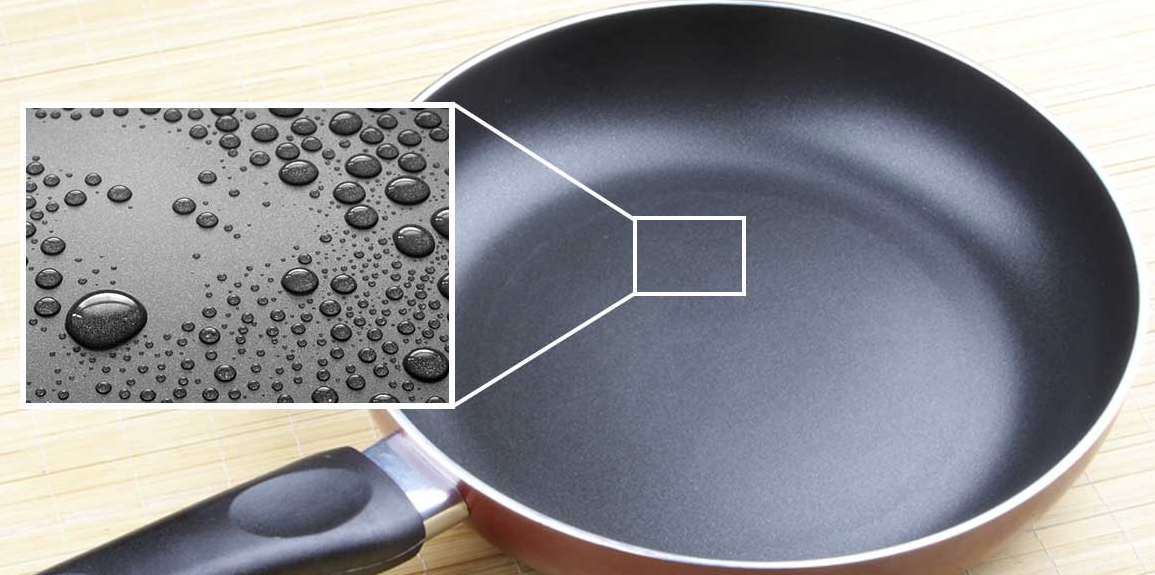We all know the advantages of using pans which are nonstick, but are we aware of their disadvantages? Do we know for sure if they are safe to our health?
Let’s talk a little about their characteristics and conclude if we should use them or not.
You must be thinking that with all the advanced technology, we can use these pans without further thinking about this dilemma. However, this topic is always coming up.
I must say I am tired of conversations about the toxic of these pans. Unfortunately, people who use this nonstick cookware should be familiar with the fact that these items are in fact toxic.
Therefore, by using these items, you may risk your health. Think again whether it is better to spend a few minutes more in to clean your kitchen or to put your health at risk?
I guess you have chosen the first option. By avoiding using these nonstick pans you are taking care of yours and your family’s health and protect them from perfluorinated alkylate substance (PFAS) exposure.
The History Of Nonstick Kitchenware
In the last ten years, this nonstick kitchenware has had some rises and falls. Teflon was the starting point, but after a short time, it was regarded as a wrong item. In the following years, it has been changed and improved, and nonstick kitchenware was at last defined as “non-toxic” and was bought at a lower price. In spite of that, it has come to light that this is not true.
Nowadays, we know that Teflon represents the brand name of polytetrafluoroethylene (PTFE). PTFE is a chemical made by perfluorooctanoic acid (PFOA, or “C8”). It has been widely discussed about the effects that this chemical has when it is warmed up and taken in as food. In all these discussions it has been revealed that PFOA has carcinogenic potential.
After this discovery, producers tried to introduce new products on the markets. For instance, in 2009, Dupont introduced GenX, which was believed to be nontoxic. Again, people started buying this nonstick cookware.
Why Are Nonstick Pans Bad for You?
The Environmental Protection Agency released the information that the chemical which was replaced in GenX Is not as safe as we thought. Furthermore, the agency claims that although this kitchenware is categorised as PFOA-free, it cannot be regarded as “non-toxic”. This new chemical –GenX affects people’s health.
Hannah Gardener is an epidemiologist and nontoxic living consultant who says:
“There was no evidence to support GenX as a safer substitute. It was simply not PFOA, but its structure was quite similar. GenX also falls into the category of PFAS (Or PFC) chemicals. Therefore, it is not shocking that in recent years since GenX came on the market, new research, particularly studies conducted with animals, have suggested that GenX has similar toxic effects as PFOA. So we’d be smart to remove any nonstick cookware made from GenX off our shopping list and get it out of our kitchens too.
It should be clear at this point that substituting a known toxic PFAS chemical with a structurally-similar option can’t be trusted as health-protective either. (Sidenote: This alphabet soup of letters can get confusing. Just remember that these abbreviations are a similar class of chemical to avoid: PFOA, PFOS, PFCs, PFAS, C8, etc.).”
Conclusion
When you choose your food, you are careful and try to determine the best because you know that food affects your health. It would be best if you did the same in choosing your kitchenware because it also affects your health.
For the nonstick pan lovers, here are some of the options which are better for you: cast iron, glass, or stainless steel; you can also consider buying cooking oils in order not to spend much time in cleaning. Therefore, when buying new cookware, take into consideration that prevention is always better than cure!


Leave a Reply